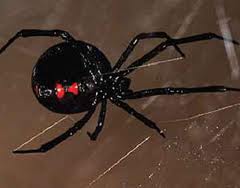Pet Detective
Jamie Katz
 Her name is Jamie Katz. She's a pet detective. And she's gonna find your missing dogs! She's a real life Pet Detective, schooled as a human Private Investigator. Jamie has found over 200 lost or stolen pets. She'll share some wild stories and give you tips to make sure your pet isn't stolen.
Her name is Jamie Katz. She's a pet detective. And she's gonna find your missing dogs! She's a real life Pet Detective, schooled as a human Private Investigator. Jamie has found over 200 lost or stolen pets. She'll share some wild stories and give you tips to make sure your pet isn't stolen.
Jamie has always worked around animals, but it was usually in a rescue fashion, since she was a little girl. In 2014, her neighbor's cat went missing. Jamie went online to see if anyone had found the cat. The cat was about 15 years old and had never been out of the house. Jamie went on Craigslist and found an ad that said, "We are private investigators and we find lost dogs, cats and gerbils." It also stated that they had tracking dogs.
Jamie's first thought was that was so stupid. She thought how could dogs find dogs or dogs find cats; how could that be possible? Her second thought was she had to call them. She did contact them, and they told her that they would have a handler contact her and that they would come out. Jamie waited for three days. They called her every day and said they were on their way, but they never showed up.
Jamie then had a new focus in life. She needed to find out for herself if dogs could find lost pets. And if they could, Jamie was going to do this for the rest of her life.
By the way, Honey the cat, was found by Jamie on day three. She was fine and was found under the house next door. Jamie now had a new career.
Before becoming a pet detector, Jamie was actually a private investigator. She has always loved animals her whole goal in life wanted to put animals and investigations together or animals and criminal justice together.
Jamie has two tracking dogs of her own, Gable and Fletcher. For tracking Jamie gives them a 100-percent scent article of the missing animal. This can include everything from a collar the animal regularly wore to even a Halloween costume that they might have worn a year ago. She just needs something that has 100-percent of just that animal's scent. Jamie and her dogs were trained to do tracking together and they train on their own once a week.
Jamie always tells everyone that her dogs are not the first thing she uses find a lost pet. She feels that awareness is the first thing. In this world, Jamie believes that if you can gain awareness, you can fix something you can change things, you can find things, and you can do anything if you have awareness.
The first thing she does on any case is to gain awareness. She does this by putting up signs. However, she does tell us that putting up signs on places like telephone poles is illegal all over the country, which makes this very difficult. But, the way you get around this is to put them on private property. If you do put a sign on public property it could be taken down, or worse, you might be fined.
Jamie begins by profiling the case and then telling the client every place to post a sign. All they have to do is to go out and actually put them up.
 Jamie started her business in September 2015. Since then, she has had about over 300 cases. About 17 of these cases were dealing with stolen pets. Most people tell Jamie that they think their dog was stolen. However, Jamie states that that is not usually the case. In most cases they escaped from the backyard or they went missing. Or, when someone finds them, they want to keep them. This also covers a big percentage of her cases; those people that want to keep these lost pets.
Jamie started her business in September 2015. Since then, she has had about over 300 cases. About 17 of these cases were dealing with stolen pets. Most people tell Jamie that they think their dog was stolen. However, Jamie states that that is not usually the case. In most cases they escaped from the backyard or they went missing. Or, when someone finds them, they want to keep them. This also covers a big percentage of her cases; those people that want to keep these lost pets.
The average time it takes Jamie to find an animal is within a 2-week period. But of course every case if different based on the actual circumstances.
Jamie is located in Ft. Lauderdale Florida, but she travels all over the country. However, there are certain states that she is not allowed to physically work in, and California is one of them. This is because she doesn't have her PI license in the state. She can do over-the-phone cases in California, but she cannot step foot in a state where she doesn't have a license.
The biggest case that Jamie had was closed. It was a high profile case regarding a dog-named Bruno. Bruno was a French Bulldog and he was missing for 180 days. Jamie was on the case the very first day. She says she never gives up!
Another case she had that was very difficult, involved a dog-named Finnegan. Finnegan was a Bichon that went missing in Palm Beach Gardens, Florida. The difficult part about this case was the signs were removed the very first day. As soon as the owners put the signs up following the campaign, they were all removed by code enforcement. This is the best way to get the information out there, so once the signs were gone, Jamie had to figure out what to do next. She then remembered that the owner sent her a video of the dog playing the piano. This was not just a video of a dog on top of a piano hitting keys; this dog was actually hitting keys and singing at the same time. She decided to contact the local news to get help putting the information out there, and it went crazy! Jamie used her tracking dogs on the case, and they took her a mile and a half in different directions; through a hole in the fence and then another hole in a fence; leading her into a neighborhood. Within two hours of being in that neighborhood, they had two sightings. Up until then, there weren't any sightings at all. Within two hours of leaving the case, wherever this dog was, the person got scared who had him. Jamie then got a call from a cleaning woman who had the dog. Jamie feels that the owner of the house told the woman to give the dog back because Jamie was so close to finding it.
The Internet is a great asset for finding pets, because everything goes very quickly when you blast something on social media. However, social media can actually take you very far away from where you are trying to be. If you post a stolen dog on the Internet, think about this, imagine you are walking your dog outside and you see a sign for a missing dog and it says it was stolen. What do you think of when you see a sign outside that says stolen dog? You don't think of anything you want to get involved in. You think of thugs, you think of prison or drugs. You think of people who are not the nicest people in the world and you think you don't want to be involved in something like that. Jamie feels that just saying the word stolen attracts a negative attention on the Internet and it brings a lot of people into a dramatic situation. However, these people are online, they are not in person. Jamie feels that the Internet is amazing in some ways and in other ways it can mess up a case if it a stolen case. Jamie usually doesn't post stolen dogs until after she gets them back unless the owners have already gone public with the news that their dog was stolen.
Jamie tells us of a case she dropped. She won't tell us the specifics on it, but she says it was a stolen dog case. Jamie felt she was getting pretty close to finding the dog, but out of the blue the client contacted her and told her that if she contacted him again, he was going to call the police and claim harassment and fraud. Jamie publicly dropped out of the case and states that usually means the person knows who took their dog and she is getting a little too close and they want her to go away. They might not have known who took their dog at the time they hired her, but since they found out, they want the case to be closed.
Jamie gives us tips on keeping your dog from being lost or stolen. She says check your fences and make sure there are no holes. Make sure your gate doesn't open by itself. Make sure that you have a fence that is 100-percent secure. Make sure your pets are microchipped and that they always have a visible ID tag on them as well. If you give your dog a bath and take their collar off, don't let them outside until you have put it back on. She would rather have a dog with a smelly collar than no dog. She often times gets phone calls where the owner just gave their dog a bath and didn't put their collar back on. One way to avoid this is to have a backup collar. If you practice these tips, chances are you will never need her services!
Visit Website
Human College Graduates 24 Pets
Tanya Womack, Eckerd College
 One of only a handful of colleges that allow and encourage pets, Eckerd College wants students to bring their dogs, cats, rabbits, ferrets, ducks and chinchillas to school. They supply pet dorms and vet visits for college kids and their pets. They even have a graduation ceremony for the creatures big and small. Tanya Womack is the Staff Coordinator for Pet Life at Eckerd College. She also consults with other colleges that wish to institute the same policy.
One of only a handful of colleges that allow and encourage pets, Eckerd College wants students to bring their dogs, cats, rabbits, ferrets, ducks and chinchillas to school. They supply pet dorms and vet visits for college kids and their pets. They even have a graduation ceremony for the creatures big and small. Tanya Womack is the Staff Coordinator for Pet Life at Eckerd College. She also consults with other colleges that wish to institute the same policy.
Tanya explains that Eckerd is actually a human college but you can bring your little furry animals with you. Eckerd College, located in St. Petersburg, Florida, was the first college to allow this. Their records date back to the early 70's where students started a small pet community on campus and the program has grown over the years.
The college allows the students to come up with ideas of what they want to have on campus. It is presented to the administration, and the next thing you know, there is some kind of program or community on campus. Over the years they have seen an increase of students who want to attend Eckerd because of their animal program alone.
 Eckerd has special dorms set aside for students with animals. There are two apartment style complexes on campus, which allows animals. There are also other areas with clusters of houses for animals. Tanya states there is always somewhere that you can bring an animal, no matter where you live on campus.
Eckerd has special dorms set aside for students with animals. There are two apartment style complexes on campus, which allows animals. There are also other areas with clusters of houses for animals. Tanya states there is always somewhere that you can bring an animal, no matter where you live on campus.
The coolest animals that Tanya has seen on campus are diaper-wearing ducks, waddling along behind their owners.
Students must have their own means of caring for their pets. Since they live in a community, they might trade pet sitting services. For example, you next-door neighbor might watch your cat and the next time you will watch their dog.
At the Pet Life Program that is run by the students, they are always trying to figure out ways to cover these needs and are working towards establishing an animal daycare on campus. This would allow a student to drop their animals off during the daytime, go to classes, and then pick their animals up after classes.
 At Eckerd College, they not only allow animals, they integrated them into their activities. They also hold a graduation ceremony for the pets. These animals have spent four years at college, so it's only fitting that they should have a ceremony when they leave.
At Eckerd College, they not only allow animals, they integrated them into their activities. They also hold a graduation ceremony for the pets. These animals have spent four years at college, so it's only fitting that they should have a ceremony when they leave.
Many feathered and scaled companions have graduated from Eckerd since the school began holding a separate ceremony in 2013. Eckerd College students can live in campus housing with one animal (dogs under 40 pounds, cats, rabbits, ferrets, ducks and chinchillas) or two small pets (fish, hamsters, gerbils, amphibians, nonvenomous reptiles under four feet long and small birds).
There is a small fee that's is charged for pets covers a vet that visits twice a year and covers a pet Halloween contest as well as the graduation ceremony. Anything that is done for the humans is also done for the animals!
A lot of other schools have reached out to Eckerd College because they want to start a similar program.
It is believed that kids that have their pets with them actually thrive do better in school, according to Tanya. She says its great after a long day of classes that you can go to your dorm room and relax where your pet is waiting for you.
Visit Website
Black Widow Spiders Poisonous to Pets - Dr. Debbie
 Pet Threats Come in All Sizes
Pet Threats Come in All Sizes
Our doggie family ambled along on our typical morning walk along the community trail. With a family of two Labradors and a Yorkie mix, my crew is always up for fun and they investigate anything and everything.
Sometimes it's a crunchy cockroach snack or the fortunate edible remnant in a discarded candy wrapper. My dogs enjoy the "date game" where they snatch up shriveled fruit fallen from date palms, crunching away before the mom and dad notice. And sometimes it's a half-hearted game of chase with an unsuspecting rabbit. A more gut wrenching episode once involved my Labrador ingesting a rat with tail slipping down his gullet like a piece of spaghetti. My furry kids are professional trouble finders so I try to keep a watchful eye for things that make them go "Oooh," and make me go "Ugh!"
Female Black Widow Spider
While walking along the pedestrian pathway we came upon today's discovery - spiders and lots of them living in the recesses of a block wall. The hairs on my arm stood up as my Yorkie mix approached their lair. I recognize what these spiders are and what could happen to a 16-pound pup.
The long legged spiders were over 1 1/2" in length, black in color with a distinctive orange hourglass mark on its underbelly. Meet the black widow spider, a common arachnid found in every state in the U.S. except Alaska.
The Black Widow Bite
Black widow spiders contain a potent neurotoxin that causes pain, swelling and can lead paralysis. Female black widows are the dangerous ones, while the males rarely ever bite. While some black widow bites go unnoticed, others cause immediate pain at the site or result in pain at the nearest lymph node. Pain intensity reaches its maximum within 1 to 3 hours after the bite, but can last up to 48 hours.
Symptoms of a black widow bite appear within 8 hours after bite an include muscle twitching, restlessness, rigid abdomen and difficulty breathing. Symptoms may result in high blood pressure, a racing heart rate, seizures and collapse. Dogs are more resistant to a black widow bite, but still can suffer serious illness. Cats are very sensitive to the toxins and can suffer fatalities.
Symptoms of black widow bite include:
 - Pain and numbness around bite site
- Pain and numbness around bite site
- Anxiety
- Racing heart rate
- Muscle pain and stiffness, especially abdominal muscles
- Difficulty breathing
- Paralysis
- Seizures
Treatment for Black Widow Spider Bite
Call your veterinarian if you suspect your pet was bitten by a black widow. Initial home emergency care of a black widow bite may include ice packing bite area and oral antihistamines like Benadryl. Your veterinarian will need to see your pet to evaluate and treat the more serious symptoms. Treatment may include medications to control muscle spasms and seizures. Blood pressure and blood sugar are monitored and intravenous fluids may be administered. An antivenin is available for more serious confirmed cases of black widow bite.
Prevention
Avoidance of spider habitats is the best prevention. These eight-legged critters favor dark recesses both indoors and outdoors. Look for cobwebs with a distinctive funnel-shaped opening at the top. And keep a close eye on your dog when out exploring. Inquire about spider control methods with your pest control company.
With pet noses so close to web level, the risk of black widow bites is just natural to being a dog. Our morning spider encounter ended without any drama, thankfully. After one firm "No!" my doggies retreated to unearth some other lucky find. Here's to hoping it doesn't involve any rats or bugs next time.
Featured veterinarian known as "Dr. Debbie" on national pet radio program, Animal Radio. Ebook author of "Yorkshire Terriers: How to Be Your Dog's Best Friend"; "Pugs: How to Be Your Dog's Best Friend"; "Mini Schnauzers: How to Be Your Dog's Best Friend"; and "Shih Tzu: How to Be Your Dog's Best Friend." Dr. Debbie's books.
Visit Website
5 Reasons You Should Adopt A Cat
Robert Semrow, Listomania
 June is adopt a cat month and the perfect time for you to consider adopting a cat and this year I'm certain more men are heading this as well. Why? Well in recent years there's been an up-tick in men adopting cats. Regardless of your gender, cats can make a wonderful addition to your home and I'm going to share 5 reasons why you should welcome a cat in to your family.
June is adopt a cat month and the perfect time for you to consider adopting a cat and this year I'm certain more men are heading this as well. Why? Well in recent years there's been an up-tick in men adopting cats. Regardless of your gender, cats can make a wonderful addition to your home and I'm going to share 5 reasons why you should welcome a cat in to your family.
To begin with, you are saving lives. Now I know that may seem obvious, but for many it's not. Yes, it's important to find a home for cats in need as they deserve a forever home where they can flourish. However, the saving lives part may also include you and your family members. Studies have shown that pets can lower blood pressure and be tremendous stress busters. Just a few minutes with a cat can make a word of difference in your physical and mental health.
Next is that they are non-stop entertainment, without the need for a computer or TV screen. Cats are incredibly entertaining creatures who don't need much to find joy in. From a simple box to paper to a ribbon or just looking out the window at the world, a cat's ability to entertain themselves is something that quickly becomes entertaining to all around them. Cats are also able to find joy in just viewing the world from a different angle. Enjoy watching all the different ways your cat finds to rest or relax in spaces and on ledges that simply defy gravity, if not common sense.
 Next is that they are very intelligent and take less effort in many ways than dogs. They do not need a lot of paw holding or opening of doors to use the green room. In fact, most cats figure out the litter box routine quickly and easily. Additionally, they bathe themselves and don't have to be told twice to do so. This is great because it's healthier and safer, as putting a cat in water is not a fun chore for those who are not scratch resistant.
Next is that they are very intelligent and take less effort in many ways than dogs. They do not need a lot of paw holding or opening of doors to use the green room. In fact, most cats figure out the litter box routine quickly and easily. Additionally, they bathe themselves and don't have to be told twice to do so. This is great because it's healthier and safer, as putting a cat in water is not a fun chore for those who are not scratch resistant.
Another reason is that they are easier to adapt in to your lifestyle. They are independent by nature and don't mind that you have to go to work for longs hours each day or might need to continue working for a while when you get home. They are very good at letting you know how much time and attention they need, then when their people time tanks are filled, they go back to their safe spaces to relax, observe and plot.
 Finally, and this is one that those who aren't cat people don't get. They are excellent snugglers and are affectionate. They are able to snuggle themselves in and keep you and themselves warm. They want to be around you and share close moments of tenderness while not crushing you. Yes, Almost all cats are lap cats; as opposed to those 100+ pound dogs who only think they are lap dogs.
Finally, and this is one that those who aren't cat people don't get. They are excellent snugglers and are affectionate. They are able to snuggle themselves in and keep you and themselves warm. They want to be around you and share close moments of tenderness while not crushing you. Yes, Almost all cats are lap cats; as opposed to those 100+ pound dogs who only think they are lap dogs.
If you're still not sure, turn on the your internet video channels and search for cats doing awesome things like playing keyboards, dressing up like stars, singing and so much more.
Share your reasons to adopt a cat on our Animal Radio Facebook Page.
Visit Website
Animal Radio News - Lori Brooks
 Tick-Borne Disease
Tick-Borne Disease
Scientists have bad news about ticks. There's a potentially fatal, tick-borne illness called Powassan. The Centers for Disease Control say tick-borne disease prevention should be on everyone's mind now through early fall when ticks are most active. Powassan is a virus that can be transmitted through a tick bite. Signs and symptoms of Powassan can include fever, headache, vomiting, weakness, confusion, seizures and memory loss. Long-term neurological damage also may occur, according to the CDC. There's no vaccine to prevent the disease and there's no specific treatment for it. People who contract a severe case of Powassan often need to be hospitalized to receive help breathing and medications to reduce swelling in the brain. The best prevention is avoiding ticks. Ticks carry not only bacterial diseases such as Lyme, but also viral illnesses like Powassan and some parasitic diseases, too. Since the late 1990s, the number of reported cases of Lyme disease in the United States has tripled and the number of counties in the Northeast and upper Midwest that are considered very high-risk for Lyme disease has increased by more than 300 percent. To protect yourself from a tick-borne infection, the CDC recommends: avoiding places with thick vegetation, high grass and leaves on the ground. Walking in the center of trails when hiking. Using repellent that contains 20 percent or more DEET on exposed skin for protection or a product called Naturapel that is as effective as DEET, but doesn't have conflicting reports about chemical side effects. Powassan may not affect pets in a harmful way like humans, but our pets can transport ticks into the home, so be sure they're getting something for tick prevention.
 Decode Your Cat's Mood
Decode Your Cat's Mood
Cats are always the picture of mystery and can be very difficult to read, especially when compared to dogs. But a team of scientists in the U.K. analyzed the expressions of 29 cats in an animal shelter and observed the changes in the cats' expression both with and without humans nearby. Scaredy cats can be recognized by their excessive blinking or half-blinking. They also tend to tilt their heads and look to the left. Cats in a more relaxed mood exhibit much of the same behavior, except they tilt their head and look to the right side. While limited, this offers a significant glimpse in the workings of the cat's mind and provides a first step for pet-owners to decode their cat's mood cues.
 MASH Prison Training for Animals
MASH Prison Training for Animals
A small team of women prisoners in Phoenix is working with the Maricopa County Sheriff's Office Animal Safety Unit (MASH). The program helps comfort and train animals rescued from A small team of women prisoners in Phoenix is working with the Maricopa County Sheriff's Office Animal Safety Unit (MASH). The program helps comfort and train animals rescued from deplorable conditions. Six days a week the women in the program are transported to the animal shelter in a former men's jail where rows of cells, some adorned with dog portraits and animal murals, have been renamed Bow Wow Way, Purr Lane, 2nd Chance and Ruff Road. Since the former men's jail was converted into a holding center to provide a safe haven for the animals in 2000, thousands of dogs, cats and horses have been cared for and adopted. Tiger, a pit bull terrier rescued from a dog fighting ring, became the beloved mascot for MASH during his nearly nine-year stay, before leaving to live with a family. Once the animals are healthy and socialized some of them may be taken by detention officers to another program at the County jail to interact with other prisoners. Women in the female-only program, that lasts at least 30 days, are interviewed and rigorously screened before they are accepted. They work with detention officers and animal care technicians to acquire the training skills necessary to get the dogs ready for adoption. As one of the women says, "These dogs are locked up just like we are and they need love just like we do … It's not about us when we come here."
 Bears Are Creeped Out By Clowns!
Bears Are Creeped Out By Clowns!
A guy in Virginia captured a viral video of the effective method he came up with to scare off a trash-stealing black bear. The video shows a bear approach and investigate a trash can outside of a home The trash can, which has a large clown doll strapped to it, appears to entice the bear, which attempts to tip the container over to go to the delicious garbage inside. The movement of the trashcan causes the clown's mechanism to trigger, making it laugh loudly, flail its limbs and light up from the eyes. The bear, was obviously scared and creeped out, stopped its trash digging and flees the scene.
All Mammals Take 12 Seconds to Poop Regardless of Size
Apparently, there's more to mammals and their pooping behavior than what we already know. Experts say it takes an average of 12 seconds for mammals to poop because it saves them from predators. According to studies, mammals take 12 seconds to poop regardless of size. Defecating is a natural thing and animals have learned to be vigilant and alert while doing their business. Researchers discovered that mice and elephants require the same amount of time to poop despite their humongous size difference. The study called the Hydrodynamic of Poo was published in Soft Matter, a journal focused on research about the chemistry and biology of the fundamental soft matter. Videos of animals on YouTube played a huge part in this study. The researchers even expressed their surprise over the huge number of animal poop videos uploaded on the Internet.
 Listen to the entire Podcast of this show (#1173)
Listen to the entire Podcast of this show (#1173)





